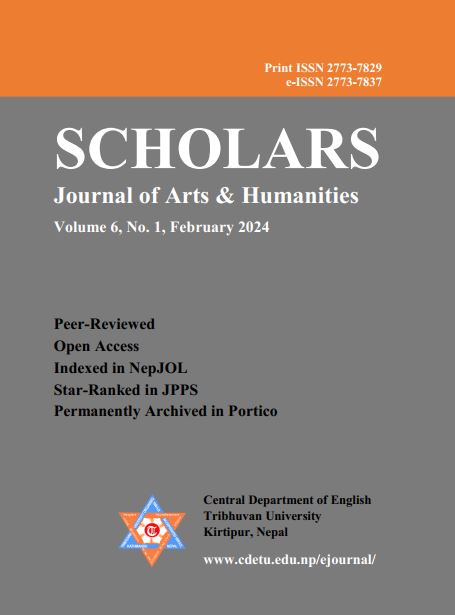The Golden Hair in Fairy Tales: Metonymy and Shifting Connotations in Cultures and Locations
DOI:
https://doi.org/10.3126/sjah.v6i1.62721Keywords:
Fairy tales, teleiopoiesis, metonymy, metaphor, shifting connotationsAbstract
This paper makes a close reading of four fairy tales, one each from France, Russia, Armenia and Nepal that feature maidens with golden hair as central characters and examines how the hair, a recurring metonymy in these tales, acquires different meanings in different cultures and locations. These moving tales retain the golden hair as their meme or cultural replicator but the societies that adapt the tales ascribe different meanings to the meme. Taking the golden hair as a metonymy for the personality of the maidens featured in these tales, this study maps the tales across distances by using the Derridian idea of teleiopoiesis. In the process, it demonstrates the shift in the connotations of the metonymy as an outcome of a circular nature of expression that allows an outside reader, both an individual and a culture, to imaginatively reconstruct its structure and meaning by conditioning the shifts to its own value system. The study reveals that the French and the Russian tales depict the golden hair as a symbol of beauty and grace while those in Armenia and Nepal, where golden hair is not a norm, treat it as a symbol of negativities as well. This difference, the study concludes, is because of the difference in the ways these societies ascribe meaning to the hair colour.
Downloads
Downloads
Published
How to Cite
Issue
Section
License

This work is licensed under a Creative Commons Attribution 4.0 International License.
© Central Department of English, Tribhuvan University and Authors




